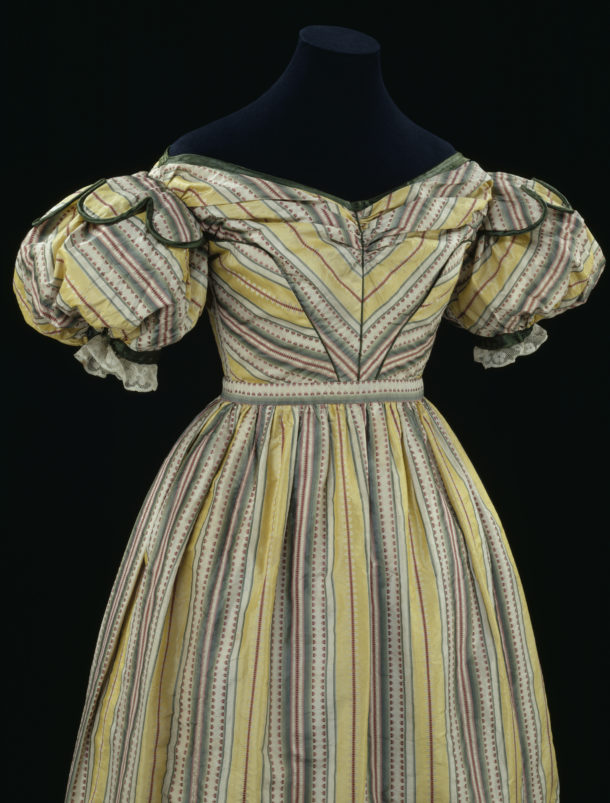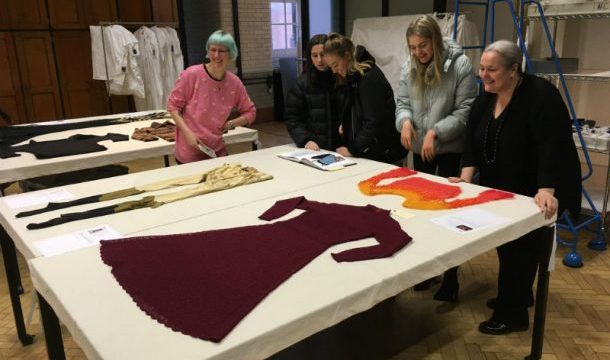This June saw the 4th annual Hammersmith and Fulham Arts Festival, a series of open events that celebrate the diverse and talented arts community living and working in the borough. Blythe House, the home of the V&A archives and storage facility, hosted a number of behind-the-scenes tours as part of the festival. This included my own tour of the Clothworkers’ Centre study and storage areas, plus a special look at pieces in the Textiles and Fashion collection that have been made from recycled textiles, bought with longevity in mind, or altered throughout their lifetime. Here are some of my favourites from the tour:
18th century silk meets 19th century dress

There are several examples in this collection, such as the one above, of dresses constructed in the 1820s to 1840s from silk woven in the 1760s to 1780s. There are several reasons for this reuse of 50 year old silks, ranging from quality to nostalgia.
The 1760s-80s saw the heyday of Spitalfields silk; woven in the London borough were the most fashionable and highest quality silks in Britain (arguably Europe). With the introduction of cotton into the fashion market in the 1780s, the silk industry began to decline. By the 1820s the silk being produced was not as crisp, or fine, or richly detailed as in the 18th century.

The fashions of the 1820s, as modelled in the photo above, were for big, puffy sleeves and full skirts. This look could be more easily achieved with the older, crisper silks. The newly manufactured fabrics were much softer, and required excessive support garments. There was also an overlap in tastes for fine stripes and dainty flowers decorating textiles.
These factors meant that those with granny’s mantua in the attic might see fit to remake it in the latest styles. Far from looking down on recycling textiles, the very notion of wearing an inherited garment played into the fashionable sense of romanticism and nostalgia of the era. Inherited objects of value carried a patina of age that implied old money. Having inherited fabric shows a familial wealth that goes back through generations, implying rank, dignity and lineage. Perhaps this helped to separate the truly classy from the newly wealthy starting to spring up at the start of the industrial revolution.
Made to be Reworn

This gorgeous red suit with a fine polka dot was bought by Rachel Ginsburg for her marriage to Walter Foster, at Brondesbury Synagogue on 4 January 1949. During the war time rationing many brides chose to shun dresses that could only be worn once. Instead they chose outfits that would be suitable for multiple formal occasions.
But a reusable wedding dress was not a new idea even then – This 1820s wedding dress came to us with two sets of sleeves – a long pair for the wedding day had been removed and replaced with a short set that would be suitable for the ballroom. Wedding dresses were cut to the same styles as fashionable evening wear, so the silhouette could remain the same. This particular dress had been altered again in the 1890s, giving it over 70 years of wear.


This is fascinating
Thank you for sharing it.
Thank you for your comment! I’m glad that you enjoyed the article.
Really interesting to find out how our ancestors were just as busy as us recycling their clothing! Love the blog Ruby, more please!
Wonderful place, make me inspirate and go there. Thanks for sharing.